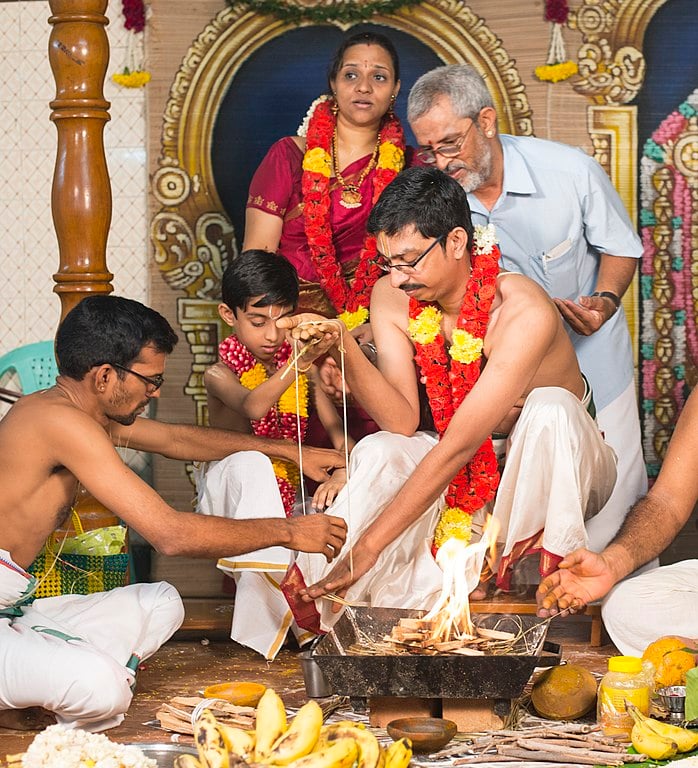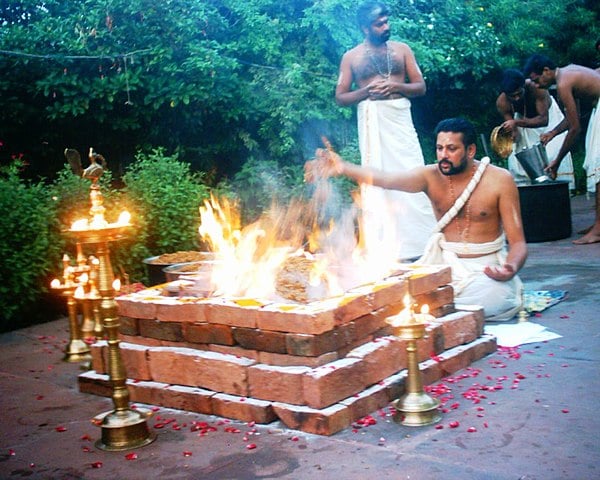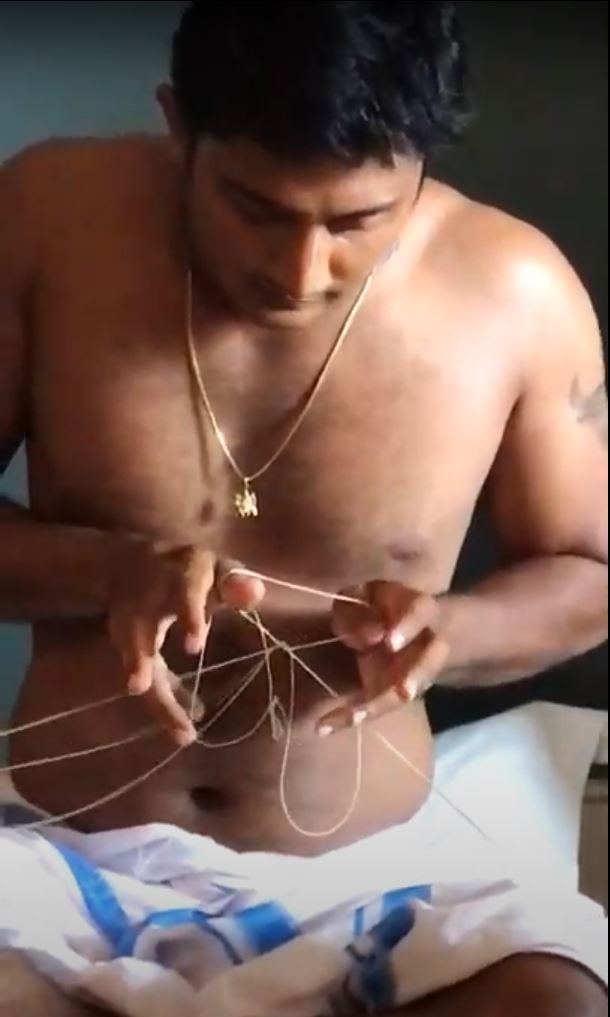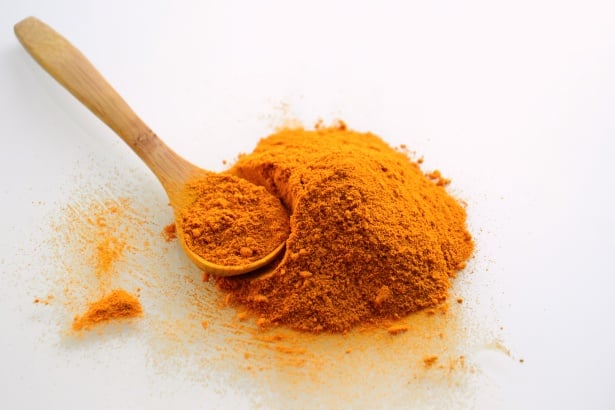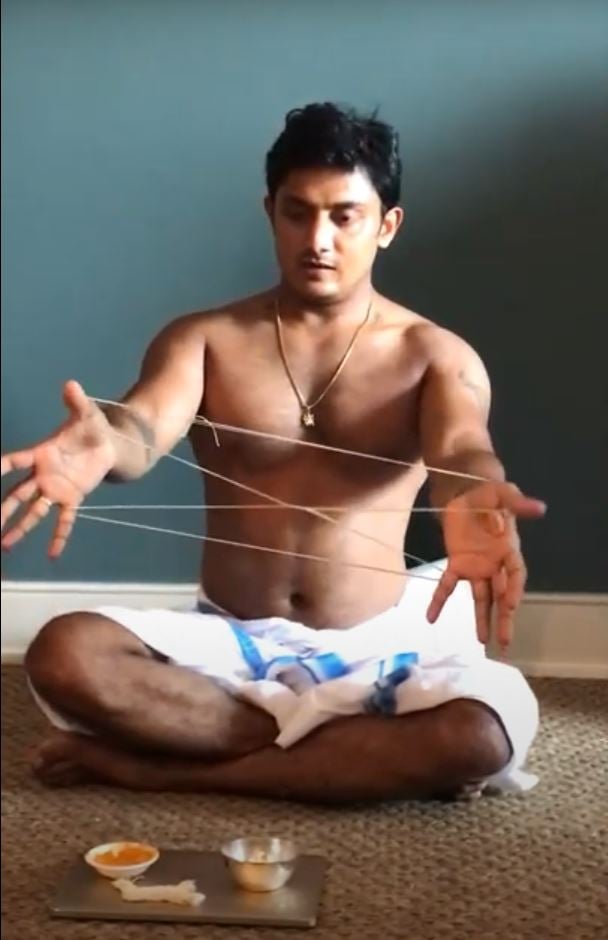
“Religion Behind the Scenes” spotlights the less discussed, but no less crucial, tasks that keep religious communities running, and the people who make it all happen.
Whether the Tallit Katan (of Orthodox Judaism), the Sudreh and Kusti (of Zoroastrianism), or the Kachera (of Sikhism), sacred clothing associated with religious obligations or covenants is a common component in many spiritual traditions. Hinduism is no different. In that ancient Indian tradition, men of the Brahmin, Kshatriya, and Vaishya castes, commonly wear a “sacred” thread (or janeu)—which they wear over their left shoulder and across to their right hip—reminding them of their covenants, commitments, and sacred responsibilities to their families, their gods, and to themselves.
Advanced Yoga Master and Guru, Deepak Pandeyji, is the founder of AnandYogaAshram.org—where he teaches others to be Yoga Instructors, in addition to teaching about mindfulness, diet, chakra balancing, and other related sacred subjects. He is a passionate and informed guru who enjoys sharing the power of yoga to transform lives. Among other things, Deepak makes janeu, and teaches the power of this “sacred thread” to help those who wear it to live more holy and spiritually grounded lives.
In this installment of Religion Behind the Scenes, Deepak tells us a bit about the process of making a janeu, why they are worn, and the spiritual side of making these “sacred threads.”
For our readers who are not Hindus, and may not be familiar with janeu, could you explain for us what these are and how they are used in Hinduism?
Sure! So, they’re often called the “sacred thread.” In India, we have a class of people knows as “Brahmins.” Brahmins are basically a sect. There are four castes or sects, if you will: Brahmins, Kshatriyas, Vaishyas and Shudras. Originally, the Brahmins were those who sought spiritual knowledge and, once they attained that, they were known as “Brahmins.” However, today, anyone who is born to a Brahmin is considered one—which is funny, because you wouldn’t consider the son of a lawyer a lawyer just because his father was one. But that’s become the case with the Hindu castes.
Anyway, today, when a Brahmin has a son, when that son becomes eight years old, the boy goes through the Yagnopavit or “sacred thread” ceremony. And this ceremony is huge in India in our day. You might have seen Indian weddings, how they do big, grand weddings. So, janeu is one of the big, big, celebrations. They take the young boy to a specific temple (in the region the family is from), the boy’s hair is shaved off (except a choti or lock in the back), he is washed, and they will recite prayers and do a havan (with a proper, qualified Brahmin or priest). It lasts hours and hours. And once the ceremony is done, the Brahmin whispers the sacred mantra into the ear of the boy—so that no one hears what he says. While today the mantra can be a common one, in olden times, they would give each boy a unique mantra, according to the child’s needs or abilities. But today, they often use the Om Gayatri mantra, which states: “We meditate on the glory of that Being who has produced this universe; may He/She/It enlighten our minds.”
As part of the havan, or fire ritual, the boy is given his janeu (or “sacred thread”), which he is encouraged to wear over his left shoulder, across his chest and back, and down to his right hip—and to wear it there (against his skin) the rest of his life. Of course, you will have more than one janeu. You don’t wear the same “sacred thread” if it becomes soiled or worn out.
So, who makes the boy’s first janeu? The boy or the Brahmin?
Initially, the Brahmin makes it. But the child is supposed to learn to make it so that he will become spiritually independent. So, if the thread becomes adulterated (or corrupted) and needs to be replaced, or if an eclipse, new moon, or full moon happens (because you’re supposed to change it then as well), if he knows how to make janeu, he can do so when he needs a new one—and not have to rely on someone else or on some website to provide a new one for him. But 99.9% of the Hindu population don't make it themselves. All they do is buy a readymade one from a shop or the internet. That’s not what we want the young boy to learn to do. When he is eight years old, he is old enough to understand things. His senses are now waking up and he is making choices that will lead him “here” or “there.” So, we must help him to go in a good direction—in the proper direction. Many temptations are everywhere and, being young, a “new fish” can go anywhere. So, he needs to learn these spiritual things. That’s one reason the ceremony is so big. Ideally, through it, the kid is awakened by the drums and everything. His senses, we hope, will perceive what's happening, and he will think, “This is for me… for my good. I will learn it and I will follow it.” That’s why we want him to make his own janeu and participate in regular havan—once a week or at least once a month.
Could you please define “havan” for our non-Hindu readers?
Yeah, havan is a process where we use certain, let's say, “nature elements” and certain mantras to create a nice vibration and to eliminate any negative energy in the environment around us. And then we start on our path again. So, it is like a rite or ritual that begins things over again. As a result, when you do havan, you use fire—to symbolically “burn everything up.” We call it “swaha” (or “svaha”), which is a word that can mean “everything goes to ashes.” It suggests that something has an auspicious ending—“so be it.” And then it is time to start anew. So havan is really a sacred ritual which is part of almost every prayer or every ceremony that a Brahmin performs. It is a purification rite that allows the participants to start over with their lives.
So, as part of receiving the “sacred thread,” the boy participates in the havan ceremony. At that point, he has a responsibility to wear a three-thread janeu. He should only wear one with three threads. A six-threaded janeu is only worn by married men. For a single boy, his only responsibilities are for himself, his parents, and his family. But, when he gets married, he has additional responsibilities—as a husband, as a father (to the children that will be), and toward a new family, which is now uniting with the family of his youth or childhood. So, he now wears a six-thread janeu, representing all six of those responsibilities that he has taken upon himself.
Unfortunately, sometimes boys become a bit annoyed by all of this; by the inconvenience, or because other kids (at school) tease them because they wear janeu or they have their heads shaved (except for the little “tail” of hair in the back). They feel a bit out of place around the other boys who are more secular. They get teased for being different. So, slowly—bit by bit—they just remove the janeu, and quit wearing it, because they don’t like putting up with the teasing or the inconvenience.
After they go through Yagnopavit, Upanayana, or the “sacred thread” ceremony, the boys are supposed to wear janeu and the hair tail forever. But, in today's times, it's considered a big hassle, and many boys don’t.
So, the sacred thread is worn for the purpose of reminding you of who you're supposed to be, how you're supposed to live your life, and what attributes you're supposed to develop?
Yes, exactly. Exactly. But situations can differ if you live in the city, for example, where your behavior will be different than if you are from a very good family, perhaps from a village, where your parents are strictly following the rituals and the lifestyle of your caste. You’ll be able to follow your religion more easily if your family does so. If they don’t, or you’re unable because of your circumstances, you will most certainly fall out of the habit of doing the rituals. So, you have to be very careful that you don’t forget what the janeu represents and, therefore, fall into very bad habits—smoking, drinking, lying, and things like that.
Now Brahmins usually participate in the sacred thread ceremony at eight years old. But the next two castes—the Kshatriyas and Vaishyas—usually wait until they are getting married to hold this ceremony and to receive the janeu. (Even some Brahmins will wait until they are getting married to participate in the janeu ceremony; but that’s less common among Brahmins.) Kshatriyas and Vaishyas usually wait until maybe a day or a week before they get married, and then they will take upon them the thread. They don’t follow all the Hindu rituals, like a Brahim will. And often, after they get married, Kshatriyas and Vaishyas will remove the janeu immediately, and not wear it anymore.
Obviously, things have changed over time—and what was once important is not as important to people today. Doing all this requires a sense of responsibility and a sincerity. You want to be mature and ready to make those commitments. But it's not as much about the sincerity of the eight-year-old child. It's about the sincerity and commitment of the family to keep the rites and to raise the child in the right practices and beliefs. If the parents and grandparents are faithful, the child is more likely to be faithful.
How long have you been wearing janeu?
That's a really nice question. Let me give a bit of background.
When I was seven, my mother passed away. And my father raised us without getting married again. And he had three of us; me, my brother, and my sister. So, I didn't get janeu when I was eight years old, which is the traditional time to receive it (if you live in a village).
I was supposed to do this at eight, but my father didn't insist, because he understood it was a responsibility, and he knew I needed to be able to follow the commitments I was making. He worried a bit, with my mother dying, that he might be putting more things on me than I could handle. So, he took good care of us, but not spiritually speaking. He used to read the Bhagavad Gita at 5am every morning. So, it was there in my ears, in my head and heart. He used to wear the thread also—until my mother died. But then he removed it. I noticed this. I wanted to ask him about it, but I didn’t. When I was around 15 or 16 years old, I was keen on receiving janeu for myself.
I used to see people in my village wearing the “sacred thread,” and they would sometimes have it wrapped around their ear. And I ask someone once, “Why do you do that?” Well, this thread—being sacred—should be reverenced and protected from things like excrement (when you use the bathroom) that would defile it. So, when they would go to the bathroom, they would wrap the one end around their ear a couple of time, just to make sure the thread was short enough that you didn’t get anything defiling on it while excreting waste when using the toilet. So, until you have finished using the bathroom and washed your hands, you don’t remove the thread from your ear. Seeing that got me asking questions, and thinking deeply about what the janeu means to these people—and what it might mean to me if I started wearing one. So, when I was 21-years old, I decided that this commitment was important to me, and would positively influence my life, and so I decided to go through the “sacred thread” ceremony—or yagnopavit. I was in college at the time, but I traveled all the way to my village without my family or anyone. I didn’t tell anyone. I just went to the Brahmin and had the havan performed, and then returned home. And, from that time forward, I followed the rules and rites in earnest. I avoided bad habits—no drinking, no smoking, no associating with people who think differently or who have lower standards in how they live their lives. And that helped me a lot.
Initially, I was purchasing my janeu from local shops. But then I came to a point in my life when I thought to myself, “Why do you keep buying these? Why can’t you make them yourself—as you should?” And one day, an old man wearing janeu—and noticing that I tried to live differently from the other boys my age—asked me: “I notice you were janeu. Do you know how to make it?” I said, “No. Can you teach me?” And so we got together and I learned from him how to make janeu. It took me quite a bit of time to learn how to do it properly—like literally two years. I even recorded the old man making it so that I could study how, but I still got confused and struggled to get it down properly.
I remember, one of my friends—who, himself, is a Brahmin, and his father is a priest at the temple. He saw me spending all of this time trying to learn how to make janeu and he laughed at me, saying “Why you are spending all of your time learning this?” And I was like, “You have no idea. This is something really beautiful.”
So, I have been making janeu since 2014. And I love making them and wearing them, because there is a unique connection I feel if I have made it myself.
Can people other than Brahmins make them?
Definitely! These days, machines are making them? Though buying one online, and paying for shipping from another country, and customs charges (or “duty” charges), etc., usually makes them more expensive to purchase than to make.
Of course, there are always people online who want to make you think these have magic powers, or something. So, they mention that this is “sacred,” and they write a really nice write up. It's like selling a stone from the beach. You keep it on a nice, royal color cloth, and you put a nice English write up with fancy words from a good writer. And then you say things like, “It has healing properties.” And you tell the people who will purchase it to “watch it” or, “if anything negative happens, hold it—placing it near your heart.” And people will start following that. So, there are people that are marketing their janeu, and are really being quite deceptive in what they say these can do. And, of course, they create prices that match their description of the thread’s purported powers.
You've already mentioned that making janeu can be a complex process. But could you tell us a bit about how you make them?
In some ways, it is much simpler now than it used to be—since, in today’s times, we have thread that is so accessible. We can just buy some and then make the janeu. Anciently, you had to grow and gather cotton, then repeatedly rub it together to make your own thread. And, only then, could you start the process of making the janeu. So, things are easier today.
The thread we use is called “sutra” in Sanskrit. That word means literally “thread,” and some of the most sacred Hindu texts are called “sutras” because they “weave” knowledge together like a thread which connects things.
We always use cotton thread for janeu. You’ll hear of people selling nylon or silk ones online. But, again, that’s not right. Cotton is what these are supposed to be made of.
There is a process for measuring the thread, so that you get it the right length. I’ve made a video showing the process, and your readers might want to watch that short explanation of the procedure. It will help them to understand what I’m describing. But, once you have measured and cut the thread, you tie it in a specific way. And, once you’ve made the janeu, you then put it into Ganga water [or water from the Ganges River, in northern India]. You also rub it in turmeric you know, the orange-colored plant? Of course, you have to wash it thoroughly after you do that, so that the turmeric stains the threads of the janeu, but doesn’t stain your clothes. You are supposed to say prayers and mantras as you make janeu.
Do you have to reapply the turmeric to the cotton over time—if you wear the same janeu repeatedly?
Yes, you do have to—at least, if your janeu is made of really nice thread and you think it’s worthwhile to wash it and reuse it. If you’re going to reuse one, you must clean it, then put it in Ganga water, and then reapply the turmeric—rubbing it into the threads. And then you can re-wear it.
You’re currently living in Spain. Prior to that, you were living in England. How are you supposed to get water from the Ganges River to make these?
You have to go to where Ganga is and collect some of the water. Again, you can order some online, and a nice expensive bottle will come. But, whenever I went to Banaras, I used to take buckets and fill them up with water (from the Ganga)—as much as I could possibly get. And then I would keep it, so that I had it on hand for puja or making janeu.
But there is a little story behind that too. If you have Ganga water in your house and somebody dies in that house, then that Ganga water can no longer be used for worship. You have to get rid of it and get fresh water from the Ganga.
But back to your point. Technically, any water from a flowing river—any river that is not stagnate—could be used to make janeu. It isn’t mandatory that you use Ganga water. But Ganga water is believed to be better, more sacred, more powerful. I don't know if you know this, but the Ganga is the only river in the world that has water that will “keep” indefinitely. You can keep that water for years and years, and you won't find a single worm in it, and it will never go bad. Try that! I didn't believe it when I first heard it, so I kept some for a long, long time and, sure enough, it never went bad.
What else about the process of making janeu should our readers understand?
Well, if you’re going to make janeu, you should find a place, which is your prayer place—where you typically meditate or say your prayers—so that you have a sacred place to make janeu in. In our house we may have a library, and that’s for studying in, or a kitchen, and that’s for cooking or eating in. So, you create an environment for the thing you need to do in that specific environment. Consequently, if you’re going to do the sacred work of making the “sacred thread,” you must have a specific space to do so in, where you go and are instantly in that more temple-like environment.
And when you go into that space, you should remember the mantra that was given to you by the Brahmin when you first received janeu. Try to not talk with anyone. Have your thread, and measure it carefully, and go through the process while in a spiritual frame of mind.
When you make it, try to take a shower before you make it. Keep your mind clear. Remember the mantra and do some yogic breathing exercises. Remember all the gods you worship, and then start making it while chanting a mantra in your mind—passing energy to the thread. And keep saying prayers or mantras until it's done. And when it's done, you finish with whatever ritual you’ve been taught accordingly, and then wear it.
Also, I should point out that not all Indians make janeu in exactly the same way. Southern Indian make it differently from those in the North, particularly in how they tie the knots. The output is same, but they may tie it in a somewhat different manner. It's like solving a math problem, which has two or three ways to do it, but you get the same answer. So, these small differences don’t make any difference when tying janeu.
Does there need to be any kind of blessing on it by a priest, or anything like that?
If you are a person who doesn't really know what's going on, or the spiritual side of making these—and you just wear it for the sake of wearing it—then it is supposed to be blessed. You should take it to a Brahmin priest, and he will touch it and say the mantra, and that will pass some of that spiritual power (we spoke of) into the thread. And then it’s done. It can be worn with propriety that that point.
Similarly, if you have a bunch of ready-made thread, you could take that thread and put it at the feet of Lord Ganesh or Shiva—or any god—at your temple, and then bow down at the god’s feet and say the mantra. And then it would be considered “blessed.” But any Brahmin could touch it and say a few mantras, and that too would be sufficient. That’s how its blessed.
Can you think of any unusual stories or experiences you've had related to the making of or use of janeu?
It is believed, if a Brahmin is a real follower, a genuine practitioner, and wears janeu—whatever he says will come to pass. So, if he says something bad will happen or something good will happen, and then he breaks his janeu, it is believed that whatever he said was going to take place will actually happen. So, in olden times, it was said, “Never trouble a Brahmin” because Brahmins have this power. It isn’t just the wearing of the janeu that gives them this power. It’s going through the ritual I just described. Generally speaking, people who are really living their faith will never do this ritual process to someone, because they know it will happen—and they don’t want to bring the equivalent of a “curse” upon someone. So, a really good Brahmin would never do this. He would be judicious in his use of this power.
Similarly, if your janeu breaks by itself—perhaps you’re wearing it and it gets hooked on something and, by accident, breaks—that is believed to be an indication that something (very soon) is going to happen. Perhaps something negative is about to happen to you. And, in my personal experience, it actually does happen shortly thereafter.
Are there positives or negatives about janeu you’ve run up against?
Yes. For example, many people see them as nothing more than symbolic, you know? They have it, but it doesn’t really have spiritual power or impact in their lives. That’s one of the negatives I’ve run up against. Cultural use with no spiritual impact.
But, on the positive side, I’ve seen its impact in the lives of those who believe in it and use it properly—and how it can help keep them on track, particularly when they are younger and more susceptible to temptations and enticements. Janeu is beautiful, and wearing this will remind that person, “Oh, I'm supposed to speak truth. I'm supposed to follow an appropriate routine. I'm supposed to study sacred things and enhance my self-knowledge.” It reminds you of those things and helps motivate you to do them—so that you’re not spiritually lost, and so that—once you die—you don’t end up coming back as a lower caste. This is the positive side of janeu.
So, what about you personally? How has janeu influenced you spiritually in your personal life?
It has changed my life 180 degrees. It helps me all the time, reminding me to practice mindfulness, and to seek to fulfill my personal role in life. It reminds me to do my duty toward my family, but also toward myself. It causes me to ask myself, “What is the real truth of my existence? Who am I really?” Janeu keeps me on the right path—a path which leads to a more holy life. It reminds me to speak the truth. It reminds me to not go to places which are bad—or which might be a bad influence upon me. It keeps me from getting lost in worldly things. It inspires me to seek the real truth in life. So, that is what it has done for me.
When people are cremated, do they wear janeu?
No, everything is removed from the body when you’re cremated. You could ask your family (before you die) to leave it on you when you are cremated, but that would be unusual.
That brings up another point, though. If I go to a place of cremation or to a cemetery—and I’m wearing janeu when I go there—when I come home, I must remove the janeu and destroy it. It cannot be purified once it is around death… much like the water from the Ganga, which I mentioned to you earlier. So, if I am around someone when they die, or if I visit a place where bodies are disposed of, I must break the janeu I wore there and put on a new one.
You mentioned that these used to be all handmade, but that many today are made by machines. Are there other ways in which the making of janeu has changed over time?
Yeah, because nowadays it's all for business purposes. Sacred things have become commercialized. For example, when I was in Nepal, I went to temples and I saw how janeu was sold outside the temples, but it was sold by somebody who was eating prawns (or meat) and smoking, and yet they were selling janeu—“sacred thread”—with those same hands, without even washing them. And telling you that their janeu is “the best,” because it comes from that specific place, and all kinds of rubbish like that.
Is there anything else you can think of that people ought to know about the sacred thread or janeu?
Yes. First, if you’re a Hindu and wear janeu, speak positively about that. Talk about the blessings that come from wearing it. The things it inspires you to do, the good health and good mind it can bring to you. Don’t empathize that it “requires” that you “follow all of these rules,” or that it is a “burden” you have to bear. When you talk about the negative, you don’t see the blessings and, perhaps, even rob yourself of the blessings available through wearing janeu.
Lastly, if you’re already wearing janeu, learn how to make it for yourself, and try to follow all the rituals possible—and follow them with the whole of your heart. Otherwise, don't do it. It makes a mockery of the sacred to only be casually engaged in these things.
Interview conducted, transcribed, edited, and condensed by Alonzo L. Gaskill.
7/13/2022 10:01:54 PM
